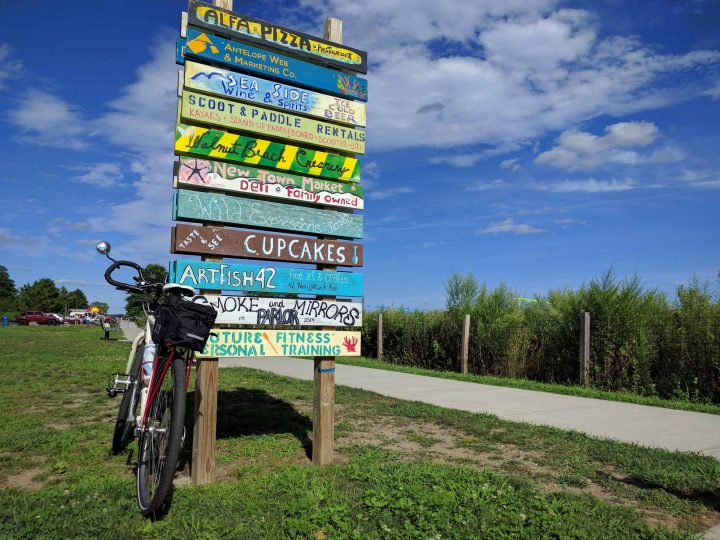
Just like King George in the musical “Hamilton”, who promises “to kill your friends and family to remind you of my love,” colonists had complex attitudes about what became known as the American Revolution. All over the 13 colonies, people were finding themselves in the position of having to choose between their long, historic bond with a powerful empire across the sea, or risk their lives and property to choose self-rule. The people of Milford had to decide whether to stay loyal or fight for independence. When war finally broke out, its tentacles were long and affected people of every stripe. Even small coastal towns like Milford would be caught up in the violence, anger, and loss that war brings.
Rebellion
Even before the war officially started, the people of Milford were ready to push back on British rule. In 1774, when the British blockaded Boston harbor with the Boston Port Act, Milford, “unanimously resolved that a subscription (donation) be forthwith opened for the relief and support of such poor inhabitants of the Town of Boston…” After Lexington and Concord in 1775, Captain Peter Pierett of Milford raised a company of rangers to go fight at the siege of Boston. That same year, Milford voted that “great guns be mounted on trucks” and voted that “select men provide guns, powder, bayonets, and provisions for the defense of the liberty of America…”
In 1776, Milford passed a law that outlawed wasting gunpowder. “Whereas at a time when our seacoasts are threatened with invasions by our enemies, a misuse of powder may prove very prejudicial…to this town…” Forts were built, cannons were mounted, and men of arms trained for quick deployments, and for good reason: raids from Long Island were not uncommon.
The War Hits Home
In 1777, the British landed a foraging party of 40 men at Pond Point. Looking for cattle but finding none, they ransacked the house of Miles Merwin instead. Mistress Merwin, at home with an infant, ran from the house with her baby and a copper pot, jumped on a horse, and rode to town banging her pot to raise the alarm. The militia arrived so quickly the British fled with only, “two hogs and a few cheeses from the Merwin Buttery.”
Also arriving by sea on January 1st of that year was a British man-of-war which unceremoniously unloaded 200 colonial prisoners suffering from smallpox onto Milford’s shores. Captain Stephan Stow along with Dr. Elias Carrington took on the dangerous job of caring for the sick men. After a month, 47 of the men had died, including Captain Stow. But thanks to Stow and Carrington, more than 150 of the men survived.
Captain Jehiel Bryan and Captain Orlando Beach, charged with guarding Milford’s shore, were considered so efficient that the British sent an officer and two others to dispatch them. According to (ital)The History of Milford, having rowed across the Sound to Milford just at dusk, (the men) approached the Bryan homestead. With drawn sword, the raider entered, but upon meeting the doughty Captain Bryan in the hall he was SO thoroughly trounced and shaken that he fled with his men, leaving the sword behind. Later, retaliatory fire was directed on some of the Bryan property near the shore, but the British missed their target by a wide margin.”
Loyalty
While some were more than willing to risk their lives for the revolution, the loyalists, or Tories, as the colonists called them, thought it treasonous to rebel against the king. Episcopal ministers, because they took loyalty oaths to the king and parliament and were paid directly by the crown, were often steadfast loyalists. They preached against revolution from the pulpit and, in some cases, directly aiding the British army.
Prior to his death, the aforementioned Stephen Stow, while attending service in Milford, was, according to (ital)The History of Milford, “so enraged when the minister preached a sermon on the subject of ‘Loyalty to the King’ that he arose and stalked angrily from the church. He never again attended services in that church.”
In 1776, to counter Connecticut loyalists, the king’s name was deleted from all governmental references, a committee of safety was assembled in every town to weed out loyalists, and citizens were required to take an oath of loyalty to the state. Properties were seized, Tories were tried and jailed, and one loyalist, caught recruiting soldiers for the British army, was hanged for treason. One option a loyalist had was to flee the state, and many Connecticut Tories fled to New York under British occupation. Loyalists were secretly ferried to Long Island where Tory enclaves could be found in Port Jefferson, Eaton’s Neck, and Huntington. One Milford Loyalist, Abram Carrington, was on a list of Connecticut loyalists who, after the war, sailed with fellow Tories from Long Island to the Bay of Fundy in Nova Scotia.
Yankee Doodle
One Milford resident who wrote about his life during the revolution was Joseph Plumb Martin. Martin’s memoirs of his youth in Milford and his time in the Continental Army is considered by historians to be one of the best accounts of the life of a common soldier during the Revolutionary War.
Published in 1830 as “A Narrative of Some of the Adventures, Dangers, and Suffering of a Revolutionary Soldier” (reissued some 150 years later under the title “Private Yankee Doodle”), Martin writes about the drudgery of working on a farm with his grandfather and his eagerness to join the fight. After much cajoling and pleading, the teenaged Martin was granted permission to sign up for a 6-month enlistment that would eventually find him fighting in New York. “I was told that the British army at that place was reinforced by fifteen thousand men, it made no alteration in my mind; I did not care if there had been fifteen times fifteen thousand. I never thought about numbers, the Americans were invincible, in my opinion.”
Martin eventually learned the hard truth about war, and what began as a short enlistment as a 15-year-old led to his presence at the Battle of Long Island, the freezing winter at Valley Forge, the execution of Benedict Arnold’s spymaster Major John Andre, the siege of Yorktown, and the British surrender.
In 1783, when the war was finally officially over, John Downs, a Milford weaver and Revolutionary War veteran famous for his very concise journal entries, wrote four words: March 31- “Went to rejoice for peace.” In those four words you can feel the relief and exhaustion, as well as the joy and the optimism of a man and a town looking to begin a new journey, in a new country, all their own.
—Gerry McGuire




